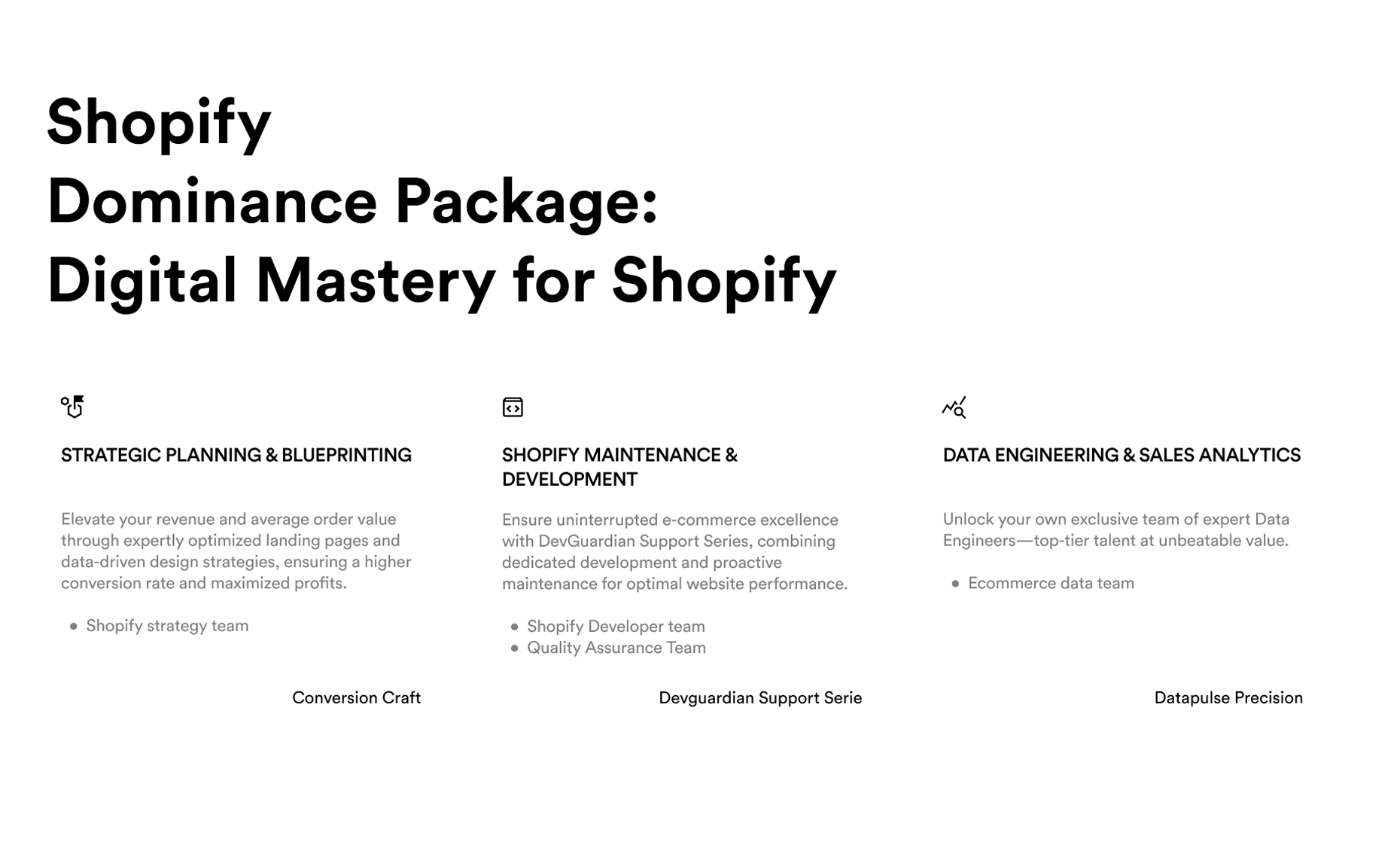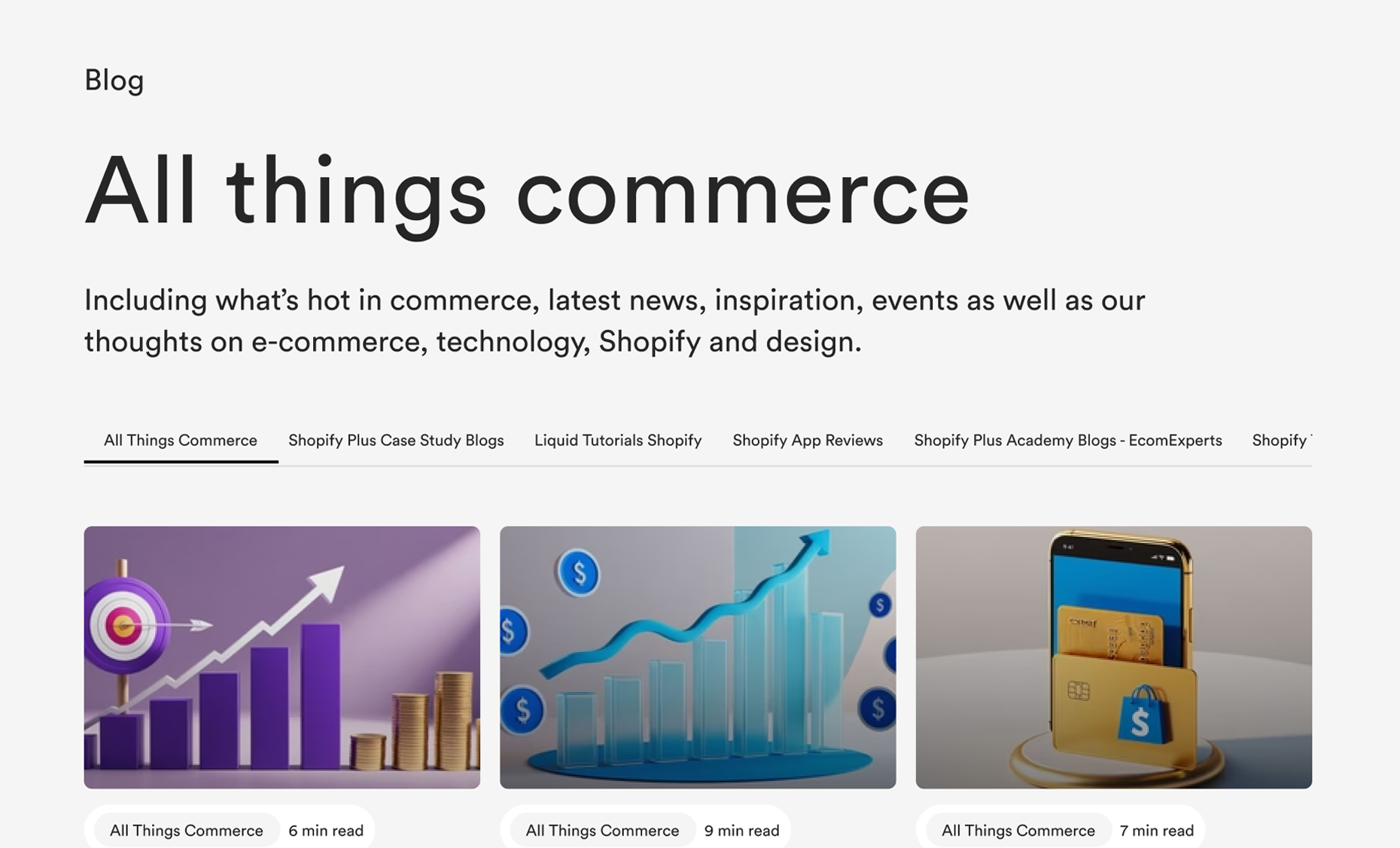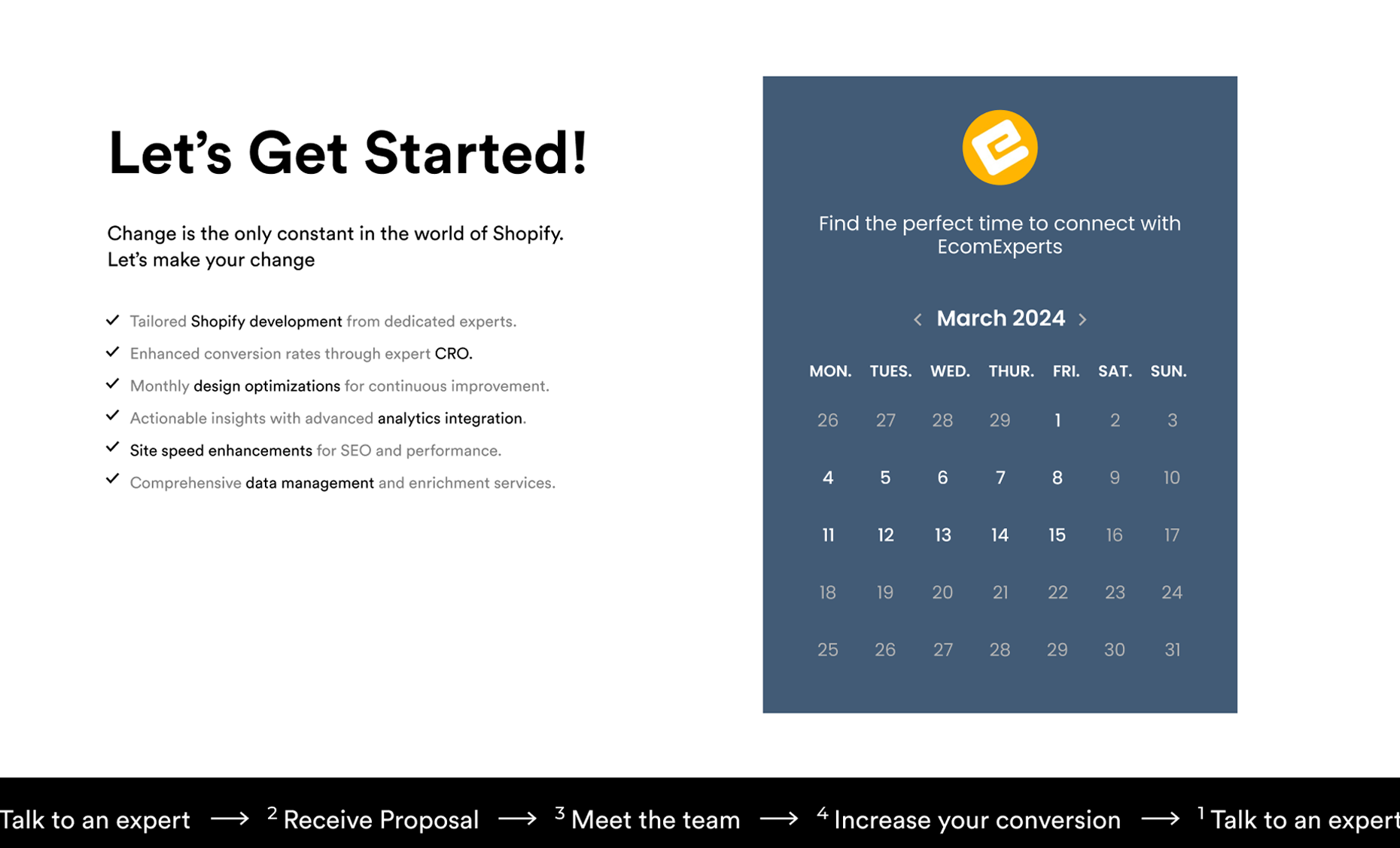
Microservices architecture has become a popular approach for building scalable and flexible e-commerce platforms. In this article, we will dive deep into understanding microservices architecture and explore how you can implement it in Shopify, one of the leading e-commerce platforms. So if you're ready to take your Shopify store to the next level, let's get started!
Understanding Microservices Architecture in E-commerce Platforms
Before we delve into the implementation details, let's first understand what microservices architecture is all about. Microservices is an architectural style where an application is built as a collection of small, loosely coupled, and independently deployable services. Each service focuses on a specific business capability and can be developed, deployed, and scaled independently.
In the context of e-commerce platforms like Shopify, microservices architecture enables developers to break down a monolithic system into smaller, more manageable services that can be developed and maintained by separate teams. This modular approach brings several benefits to the table, which we will discuss in the following sections.

One of the key advantages of microservices architecture in e-commerce platforms is the ability to scale individual services based on demand. For example, during peak shopping seasons like Black Friday or Cyber Monday, the checkout service can be scaled independently to handle the increased load without affecting other parts of the system. This scalability ensures a seamless shopping experience for customers even during high traffic periods.
Furthermore, microservices architecture promotes a culture of continuous delivery and DevOps practices within development teams. Each microservice can have its own automated testing, deployment, and monitoring processes, allowing for faster and more frequent updates to the platform. This agility is crucial in the fast-paced e-commerce industry where staying ahead of the competition requires rapid innovation and iteration.
Key Benefits of Implementing Microservices in Shopify

Implementing microservices in Shopify can unlock a myriad of benefits for your e-commerce business:
- Scalability: Microservices allow you to scale different parts of your application independently, ensuring optimal performance even during peak traffic loads.
- Flexibility: With microservices, you can easily introduce new features or update existing ones without affecting the entire system. This flexibility enables you to respond quickly to market demands.
- Improved fault isolation: As each microservice operates independently, a failure in one service won't bring down the entire system. This fault isolation improves the overall resilience of your Shopify store.
- Team autonomy: Microservices enable separate teams to work on different services, promoting faster development cycles and reducing dependencies between teams.
Now that we understand the benefits, let's explore how you can plan your microservices strategy for Shopify.
When planning your microservices strategy for Shopify, it's essential to consider the architecture of your e-commerce platform. By breaking down your application into smaller, interconnected services, you can achieve greater modularity and maintainability. Each microservice can focus on a specific business function, such as inventory management, order processing, or customer relations, allowing for more efficient development and easier troubleshooting.
Furthermore, implementing microservices in Shopify can enhance the overall user experience of your online store. By decoupling different functionalities into separate services, you can optimize the performance of each service individually, leading to faster response times and improved reliability. This can result in higher customer satisfaction and increased conversion rates, ultimately driving the success of your e-commerce business.
Planning Your Microservices Strategy for Shopify

Implementing microservices in Shopify requires careful planning and consideration. Here are a few key steps to help you devise an effective strategy:
- Identify your business capabilities: Analyze your Shopify store and identify distinct business capabilities or functional areas that can be encapsulated into separate microservices.
- Define service boundaries: Clearly define the boundaries of each microservice to ensure clear separation of concerns and minimize interdependence.
- Define communication protocols: Determine how your microservices will communicate with each other. RESTful APIs or message queues are common approaches.
- Establish deployment and versioning practices: Define how you will deploy and version your microservices to ensure smooth updates and rollbacks.
With a well-defined strategy in place, you are ready to start breaking down the monolithic systems in your Shopify store.
Breaking Down Monolithic Systems in Shopify

Breaking down a monolithic system into microservices requires a careful analysis of your existing codebase and functionality. Here are a few steps to consider:
- Identify bounded contexts: Identify cohesive areas within your monolithic system that can be encapsulated into separate microservices.
- Decouple shared components: Analyze shared components and extract them into standalone services to minimize interdependencies.
- Refactor and migrate: Refactor your codebase to adapt to the microservices architecture and gradually migrate functionality to separate services.
While breaking down monolithic systems requires careful planning and execution, it paves the way for a more scalable and flexible architecture in your Shopify store.
Tools and Technologies for Microservices in Shopify
Implementing microservices in Shopify involves leveraging a range of tools and technologies. Here are some popular ones:
- Kubernetes: Kubernetes, an open-source container orchestration system, provides the foundation for deploying and managing microservices at scale.
- Docker: Docker containers offer a lightweight and portable way to package and deploy microservices, ensuring consistency across environments.
- Service mesh: A service mesh, such as Istio or Linkerd, provides advanced traffic management, security, and observability capabilities for microservices.
- API gateways: Tools like Kong or Ambassador help you expose and manage APIs across your microservices.
Choosing the right tools and technologies is crucial for successfully implementing microservices in Shopify. It's essential to consider factors like scalability, observability, and developer experience.
Best Practices for Designing Microservices in Shopify
Designing microservices for your Shopify store requires adherence to best practices to ensure a robust and maintainable system. Here are a few key recommendations:
- Single responsibility principle: Each microservice should have a clear and specific business responsibility.
- Domain-driven design: Apply domain-driven design principles to identify bounded contexts and define the relationships between microservices.
- Event-driven architecture: Embrace event-driven patterns to enable loose coupling and asynchronous communication between microservices.
- Automated testing: Implement comprehensive automated testing strategies to ensure the correctness and stability of your microservices.
Following these best practices will help you build a scalable and maintainable microservices architecture in Shopify.
Overcoming Challenges When Adopting Microservices in Shopify

While microservices bring numerous benefits, they also introduce challenges that need to be addressed. Here are a few common challenges and how to overcome them:
- Complexity: Microservices introduce a higher degree of complexity compared to monolithic systems. Establish good observability practices and leverage appropriate tools to monitor and debug your microservices.
- Data consistency: As microservices operate independently, ensuring data consistency across services can be challenging. Implement eventual consistency patterns and leverage distributed transactions where necessary.
- Service orchestration: Coordinating multiple microservices to accomplish complex tasks requires thoughtful design. Consider using workflow engines or implementing choreography-based coordination.
By being aware of these challenges and adopting appropriate strategies, you can navigate the complexities associated with microservices adoption in Shopify.
Testing and Monitoring Microservices in Shopify

Testing and monitoring are critical aspects of maintaining a healthy microservices architecture in Shopify. Here are a few practices to consider:
- Unit testing: Implement thorough unit tests for each microservice to ensure individual components work correctly.
- Integration testing: Perform integration tests to verify the interactions between microservices.
- End-to-end testing: Execute end-to-end tests to validate complex user flows and integration points.
- Monitor service health: Utilize monitoring tools and techniques to track the performance and availability of your microservices.
By implementing a comprehensive testing and monitoring strategy, you can proactively identify and address issues in your microservices architecture.
Scaling Microservices Architecture in Shopify

One of the key advantages of microservices architecture is the ability to scale specific services independently. Here are a few considerations for scaling your microservices in Shopify:
- Utilize horizontal scaling: Leverage cloud-based infrastructure to scale your microservices horizontally across multiple instances.
- Implement auto-scaling: Set up auto-scaling policies based on metrics like CPU utilization or request rates to dynamically adjust the number of instances.
- Caching: Implement caching strategies to alleviate the load on your microservices and improve response times.
With proper scaling strategies in place, you can handle increased traffic and ensure a smooth shopping experience for your customers.
Conclusion
In conclusion, implementing microservices architecture in Shopify can bring significant benefits to your e-commerce business. By understanding the core concepts, planning your strategy, and following best practices, you can build a scalable, flexible, and maintainable architecture that propels your Shopify store to new heights. So why wait? Start exploring the power of microservices in Shopify and unlock endless possibilities for your online business.











